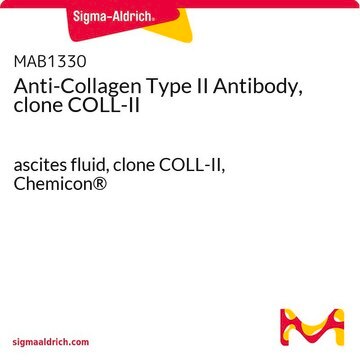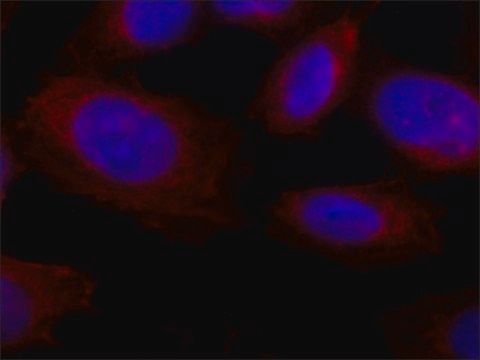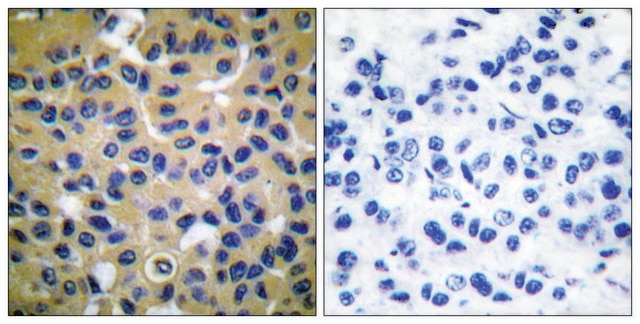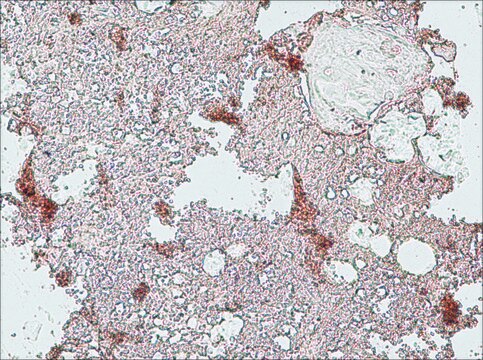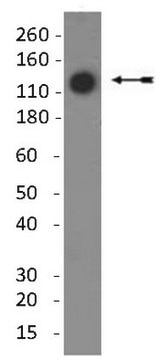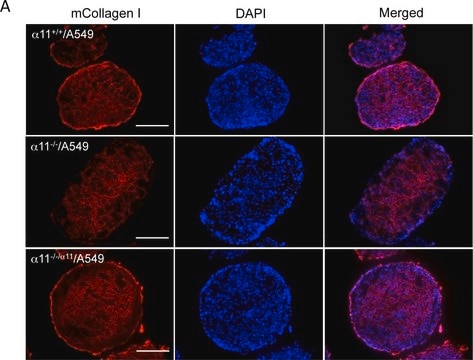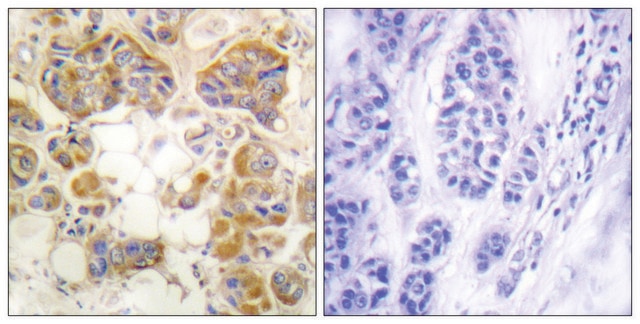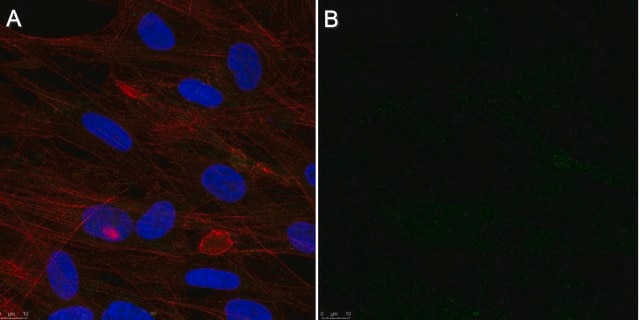234196
Anti-Collagen Type X Rabbit pAb
liquid, Calbiochem®
Sign Into View Organizational & Contract Pricing
All Photos(1)
About This Item
UNSPSC Code:
12352203
NACRES:
NA.41
Recommended Products
biological source
rabbit
Quality Level
antibody form
serum
antibody product type
primary antibodies
clone
polyclonal
form
liquid
does not contain
preservative
species reactivity
human, mouse, rat
manufacturer/tradename
Calbiochem®
storage condition
OK to freeze
avoid repeated freeze/thaw cycles
isotype
IgG
shipped in
wet ice
storage temp.
−70°C
target post-translational modification
unmodified
Gene Information
human ... COL10A1(1300)
General description
Rabbit polyclonal antibody supplied as undiluted serum. Recognizes type X collagen.
Recognizes type X collagen. Exhibits slight cross-reactivity with fibronectin and type II and type IX collagen. Does not cross-react with type I, type III, or type XI collagen.
This Anti-Collagen Type X Rabbit pAb is validated for use in Frozen Sections, Immunoblotting, Immunoprecipitation, Paraffin Sections for the detection of Collagen Type X.
Immunogen
Rat
purified, rat chondrosarcoma cell collagen type X
Application
Frozen Sections (see comments)
Immunoblotting (1:100-1:300)
Immunoprecipitation (1:20-1:40)
Paraffin Sections (see application reference; pretreatment required)
Immunoblotting (1:100-1:300)
Immunoprecipitation (1:20-1:40)
Paraffin Sections (see application reference; pretreatment required)
Warning
Toxicity: Standard Handling (A)
Physical form
Undiluted serum.
Reconstitution
Following initial thaw, aliquot and freeze (-70°C).
Other Notes
Chung, K.S., et al. 1995. Dev. Biol. 170, 387.
Schmid. T.M., and Linsenmayer, T.M. 1985. Dev. Biol. 107, 373.
Schmid. T.M., and Linsenmayer, T.M. 1985. Dev. Biol. 107, 373.
Legal Information
CALBIOCHEM is a registered trademark of Merck KGaA, Darmstadt, Germany
Not finding the right product?
Try our Product Selector Tool.
wgk_germany
WGK 1
flash_point_f
Not applicable
flash_point_c
Not applicable
Certificates of Analysis (COA)
Search for Certificates of Analysis (COA) by entering the products Lot/Batch Number. Lot and Batch Numbers can be found on a product’s label following the words ‘Lot’ or ‘Batch’.
Already Own This Product?
Find documentation for the products that you have recently purchased in the Document Library.
Michael M Weinstein et al.
Journal of bone and mineral research : the official journal of the American Society for Bone and Mineral Research, 29(8), 1815-1822 (2014-03-20)
Activating mutations in transient receptor potential vanilloid family member 4 (Trpv4) are known to cause a spectrum of skeletal dysplasias ranging from autosomal dominant brachyolmia to lethal metatropic dysplasia. To develop an animal model of these disorders, we created transgenic
Carmen Corciulo et al.
Nature communications, 8, 15019-15019 (2017-05-12)
Osteoarthritis (OA) is characterized by cartilage destruction and chondrocytes have a central role in this process. With age and inflammation chondrocytes have reduced capacity to synthesize and maintain ATP, a molecule important for cartilage homeostasis. Here we show that concentrations
Karthikeyan Rajagopal et al.
Cartilage, 13(2_suppl), 571S-581S (2021-09-29)
Hypertrophic cartilage formation is a major setback in mesenchymal stem cells (MSCs)-mediated cartilage repair, and overcoming it requires optimization of differentiation. Here, we tested the miR-140 activated collagen hydrogel for the chondrogenic differentiation of MSCs and to produce hyaline cartilage.
Dharmendra Choudhary et al.
Scientific reports, 6, 21668-21668 (2016-02-27)
Externally visible body and longitudinal bone growth is a result of proliferation of chondrocytes. In growth disorder, there is delay in the age associated increase in height. The present study evaluates the effect of extract from transgenic tomato fruit expressing
Fumihisa Nakamura et al.
FEBS open bio, 8(6), 962-973 (2018-06-22)
Angiotensin II type 1 receptor (AT1R) appears to have a mechanosensing function in a number of cell types. The purpose of this study was to examine whether AT1R expressed in articular chondrocytes is involved in osteoarthritis (OA) progression in vivo
Our team of scientists has experience in all areas of research including Life Science, Material Science, Chemical Synthesis, Chromatography, Analytical and many others.
Contact Technical Service